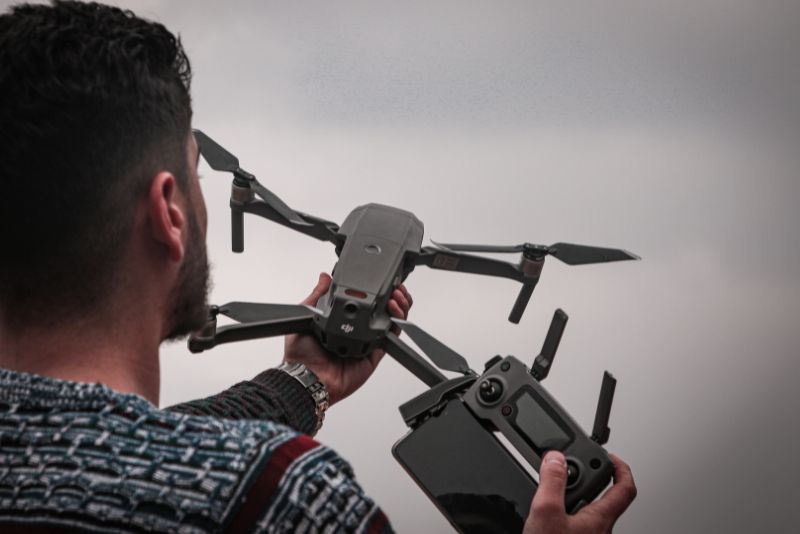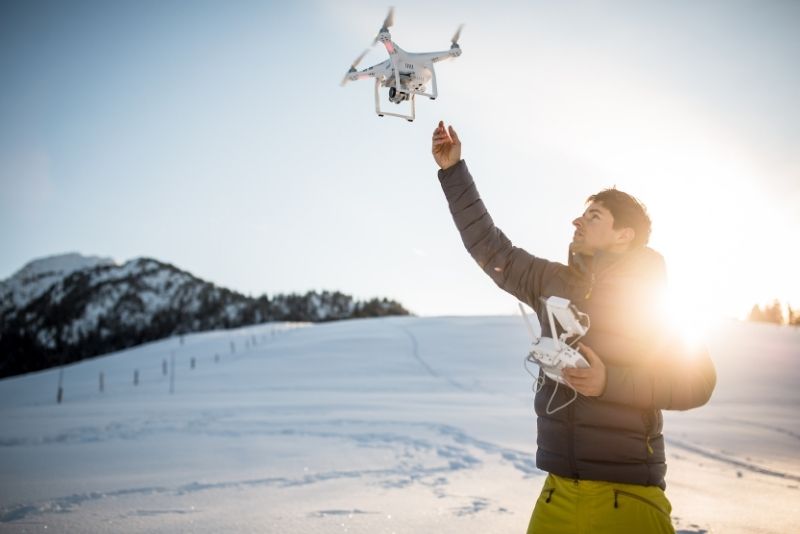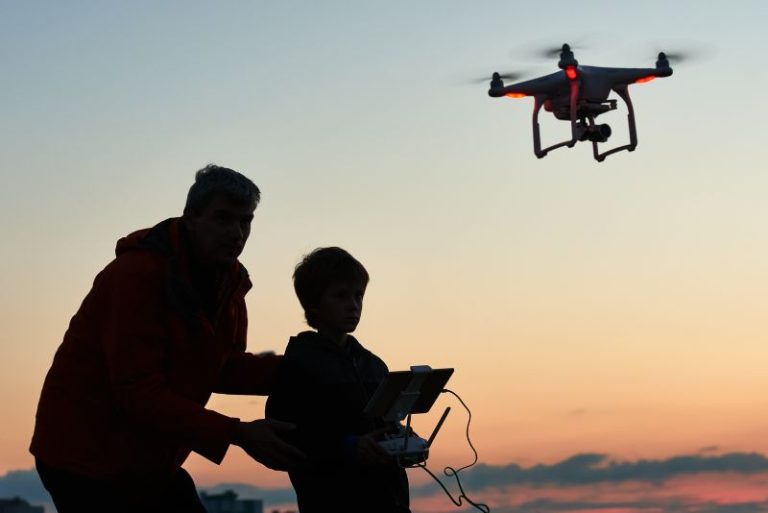Over the last few years, the hobby drone has ‘taken off’ and become a gadget that many outdoors enthusiasts and tech hobbyists enjoy operating.
According to a survey by Drones Direct, the majority (over 50%) of the droning community are aged between 46 – 55+, and many have adopted droning as a new hobby for early retirement. And almost a third of owners use their drone every week. Not the picture you imagined?
Another interesting stat, courtesy of Drones Direct, is that nearly 68% cite photography as their main interest, followed closely by hiking in the great outdoors (42%)! And if you’re looking to pilot your drone in Chichester, look out, it has seen more drone purchases than anywhere else in the UK.
With some lucky recipients receiving a drone as a Christmas gift and with clearer skies on the horizon, it’s important to understand where and how you can use your drone (and put something in place to ensure you don’t lose out if you get caught up in the next British storm)!

Do I need insurance for a drone?
There is no law to say that privately owned drones have to be insured, however, with hobby drones gaining in popularity, legislation is in the pipeline.
There are two distinct types of drone insurance available, depending on the kit and what you use it for: commercial or hobby.
Do you use your drone for commercial gain? If the answer is ‘yes’, you will need bespoke Commercial Drone Insurance. This is because a Commercial policy will include additional benefits, and likely higher premiums, based on usage.
However, if you receive a recreational drone for Christmas, and enjoy flying it for personal photography or racing and such forth, then consider your insurance options based on value. You may be able to insure it under your home insurance policy should it be stolen, but you would have to accept that, in the case of an ‘unintentional flyaway’ or accident, you would need to replace it. It is worth mentioning that drones are usually excluded from gadget insurance policies.
Drone insurance is certainly recommended if your drone is over the value of £400 as the cost of replacement is higher. Drone insurance also covers you for accidental damage, theft from a secure place, unintentional flyaway, and defense costs and expenses in the event of an accident.
Should your drone, commercial or otherwise, crash into someone’s vehicle or through a window, you’ll need to ensure you’re covered for both the damage to the drone and damage it causes, whether to property or person!
Is my drone covered by my home insurance, car insurance or gadget insurance?
Home insurance: If your drone is stolen from your home address, then yes, some providers could cover this under your home insurance policy – but do check with your insurer. The downside is that it won’t cover your drone away from your home. Given most head out into the Great Outdoors to pilot their drone it’s clear that you would need a policy for it that is as mobile as you are.
Car insurance: Most car insurance policies exclude drone cover, some may cover theft from the vehicle. So, if you were out driving and pulled over to use your drone, you would not be covered for its use outside the vehicle should it be damaged, cause damage or fly away.
Gadget insurance: Gadget insurance policies typically exclude drones.
What do I need to take out drone insurance?
To take out drone cover, you will need your operator ID which you receive when you register your drone with the Civil Aviation Authority. If your drone is still brand new and you aren’t aware of what you need to do, the instructions will detail how to do this.
It is mandatory for all drone users to have an operator ID. Drone pilots don’t need any experience in flying the drone to obtain this. If the drone is owned by a child, their parent needs to get the operator ID by registering the drone.
Can I insure more than one drone?
Yes, you can. Did you know that nearly 25% of drone-owners own two drones, 10% own three and a lucky 5% own as many as 4? With so many models available at different prices, with different specialities, it’s important to ensure that each is correctly insured. Especially when you consider that 14% of drone owners are considering spending £1,500 on their next drone.
Is my drone covered for winter damage?
Dramatic weather may make for an exciting photographic landscape, but it also increases the risk of damage to your drone (or anything your drone may be blown into!).
Whether swept away in a windstorm, or caught in a sudden heavy downpour causing it to crash, having the right insurance in place is essential, particularly throughout the winter months.

Can I get drone cover for my holiday?
If you would like to take your drone on a skiing trip, for example, you will be covered within the EU. Wherever you do go, whether UK or Europe, it is imperative to research the guidelines and regulations for the airspace you are hoping to fly in and stay out of restricted airspace to stay on the right side of the law!
Is my drone insured if I lend it to someone?
We know that droning is a very sociable pastime for many. Over 18% of drone users have enlisted their children in their hobby.
The good news is that, if you’d like to share it with family and friends, you can easily add them to your policy if you wish, so that it isn’t just the policyholder who is the only person insured to use it. That means that everyone is covered should it fly away unexpectedly, or crash and cause damage.
Do I need public liability for my drone?
The good news is that hobby drone insurance comes with Third Party Liability insurance. This means that you are covered should your drone cause any damage – but of course this only applies in areas where you have permission to be.
Drone insurance also covers you for bodily injuries to another person, and even covers you for your legal expenses.
Just like the skin of your drone is your individual choice, each drone policy is based on your individual usage. The best way to decide if it’s something you need is to pick up the phone or pop into branch and speak to one of our drone insurance specialists who will point you, and your drone, in the right direction.

